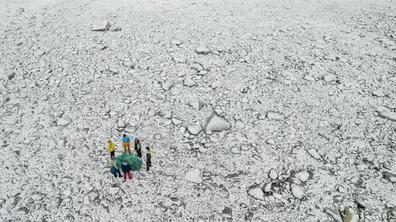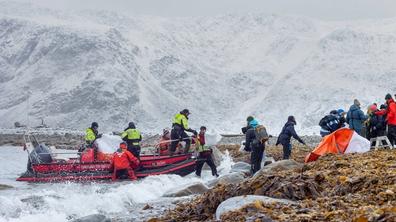Plastic has been found in Arctic birds since the 1960s.
- I cannot allow myself to feel disheartened. The research I conduct and disseminate does not exactly deal with the most pleasant of topics, environmental toxins and plastic littering, but it’s important to raise people’s awareness so they can change their behavior, explains Polar Researcher Geir Gabrielsen.
Plastic affects the wildlife in the Arctic. Like elsewhere on the planet, macroplastics constitute a risk to wildlife, as animals mistake plastic for food, use it to build nests or get caught or trapped in it, which can, in the worst cases, lead to the death of the animals. When macroplastics, such as bottles and net cuttings, end up in nature, they are slowly but surely broken down. Clearing up macroplastics is therefore not only important in order to reduce litter, but to prevent pollution in the form of macroplastics and nanoplastics, as well as the leakage of chemical substances from plastic.
Few species, short food chains
Few species live in the Arctic compared to lower altitudes and those that live there are well-adapted to the harsh climate. The impact of plastic on wildlife differs from lower altitudes, as the food chains in the Arctic are short. This means that plastic moves up the food chain from small to large animals at a much faster rate.
Birds play an important role in the Arctic ecosystem and therefore act as an indicator of the state of the environment. The seabird population in the Arctic is significantly higher than the population of land birds. Seabirds obtain a lot of their food from the open seas, move across vast geographical regions and eat a varied diet. Plastic floating on the surface can be mistaken for the birds’ natural prey. A good example of the consequences this can have is the northern fulmar.

Today, all of the fulmar chicks on Svalbard have plastic in their stomachs. Many of them leave the nest a whole 300 grams below their desired weight because they have been fed plastic. They are not able to survive the winter on Svalbard. There is a risk that the same trend we have seen on Hawaii when it comes to the albatross could become reality here. Empty nests, where the only thing left in the end will be the plastic the dead chicks had in their stomachs as they died.
Geir Gabrielsen, Polar Researcher
Plastic and environmental toxins
Additives from plastic have been documented in the liver and eggs of the northern fulmar. The concentrations are low and the consequences this could have for the birds’ development remain uncertain.
Around 500 different additives are used in plastic. This means that different types of plastic have different degradation times and additives leach out at different speeds. Some of the substances are harmful to the environment. If animals ingest environmental toxins, this can disrupt their hormone balance and metabolic processes, while also weakening the immune system. According to the research article Plastic Pollution in the Arctic, more knowledge is needed to determine whether plastic represents a key source of environmental toxins in the Arctic.

Litter on the seabed
It’s not just on the surface and on beaches that plastic poses a problem for wildlife. Most marine litter sinks to the seabed. Some studies have looked at the incidence of macroplastics on the seabed, including in the Fram Strait. The study showed that several sponge colonies on the seabed were covered in plastic. Studies conducted outside of the Arctic show that covering and entanglement can lead to sponge colonies becoming more receptive to disease, making them an easier target and leading to the sponges becoming too overgrown to absorb nutrients. Other studies have looked at the effect plastic on the seabed could have on life in sediment, where one consequence could be reduced oxygen supply to the seabed. This may lead to less organic material being broken down, which means that fewer key nutrients will be available. The density of animals living on the seabed could therefore decrease. How litter affects the seabed in the Arctic is not well documented, according to the research article Plastic Pollution in the Arctic.
Little is known about microplastics on the seabed. One finding is that the concentration of microplastics in sediment samples from Canada and Svalbard is among the highest measured in a global context. It is uncertain what effect microplastics have on animals that filter sediments to absorb nutrients. The effect of litter on the seabed in the Arctic is not well documented, according to the research article Plastic Pollution in the Arctic.
The main picture was taken by Timo Virmavirta/Aktiv i Friluft.




